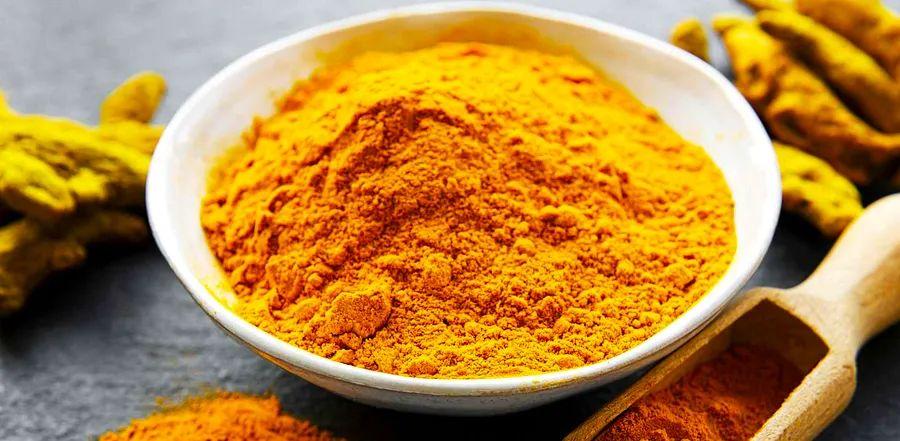Top 5 Turmeric Alternatives and How to Use Them

Imagine preparing your favorite dish that requires turmeric, only to realize you don’t have any fresh turmeric or the powdered spice in your kitchen.
Before rushing to the store, check your spice rack for one of our top five turmeric alternatives. There's a good chance you already have one of these on hand!
Continue reading to discover our top five turmeric substitutes, how to incorporate them into your recipes, and the right conversion ratios.
What Does Turmeric Taste Like and How Is It Used?
Turmeric is a vibrant yellow-orange spice made from the dried and ground root of the turmeric plant. Its flavor is a mix of ginger and mustard with a bold, peppery kick. Some describe it as earthy, bitter, and musky, while others note its nutty and citrusy undertones.
Turmeric is a versatile ingredient used to enhance flavor and add color to both foods and drinks. A pinch of powdered turmeric can spice up milk, coffee, tea, or juice. It’s also great for flavoring soups, stews, curries, rice, sauces, and can be used in marinades and dry rubs.
For some tasty ideas, check out 25 of Our Favorite Ways to Use Turmeric.
Substituting Fresh and Dried Turmeric
Turmeric powder is the dried, ground form of the turmeric root. It's a common and accessible spice, available in the spice section of most grocery stores. Fresh turmeric roots can often be found at Asian and South Asian markets.
While most recipes call for turmeric powder, you can easily make your own by peeling the turmeric root, boiling it, grating it into a fine texture, letting it dry, and then grinding it into powder using a food processor.
Fresh turmeric is less concentrated than the powdered version, meaning you’ll need to use at least three times as much grated fresh turmeric to match the flavor of ground turmeric.
For example, if your recipe calls for 1 teaspoon of turmeric powder, you should substitute it with 1 tablespoon of freshly grated turmeric, which is about half to one inch of the fresh root.
If your recipe requires fresh grated turmeric and you only have powder, follow the 1:3 ratio: replace each tablespoon of fresh turmeric with 1 teaspoon of turmeric powder.

Top Turmeric Substitutes
If you don’t have fresh turmeric root or ground turmeric on hand, here are five great substitutes that can replicate the flavor, color, or both. Since each ingredient has its own unique flavor, it's always best to taste test a small amount before using it in your recipe.
Ground Cumin
Ground cumin has a pungent, earthy, and slightly bitter flavor with nutty and citrusy undertones, making it a suitable alternative to turmeric. Like turmeric, it is commonly used in a variety of dishes, including sauces, soups, stews, and marinades.
How to substitute: As a general guideline, use half a teaspoon of ground cumin for every teaspoon of turmeric. For recipes like our Red Split Lentils (Masoor Dal), which calls for 1/4 teaspoon of turmeric, simply replace it with 1/4 teaspoon of cumin, along with the usual amount of cumin the recipe requires.
Mustard Powder
Did you know that prepared mustard contains turmeric? It’s no surprise, as both share bold, earthy, and spicy flavors. Mustard also works well as a turmeric substitute, offering a similar yellow hue.
How to substitute: Since mustard powder also has nutty and vinegary notes, use 1/2 teaspoon of mustard powder for every teaspoon of turmeric. In curried dishes like our Authentic and Easy Shrimp Curry or saucy recipes such as Somali Spaghetti Sauce, this substitution is subtle enough that it should go unnoticed by most guests.
Ground Ginger
How to substitute: Generally, one inch of freshly grated ginger is equivalent to the amount of grated turmeric root. The exact substitution may vary depending on the dish and your personal taste. For a milder ginger flavor that doesn’t overpower your recipe, use half a teaspoon of ground ginger for every teaspoon of turmeric.
Curry Powder
Curry powder, like turmeric, is a bold spice, but it contains a blend of spices such as cumin, ginger, and black pepper, with turmeric as the base. If your recipe already calls for curry powder, consider replacing turmeric with it for added complexity.
How to substitute: We recommend using 1/4 teaspoon of curry powder for every teaspoon of turmeric, to avoid overpowering the other flavors in your dish.
Saffron
If you're out of turmeric but have saffron on hand, these vibrant red threads are an excellent substitute, especially for coloring rice and risottos with their signature golden hue. However, saffron doesn't have the same bold flavor as turmeric; it brings a more delicate, floral, and sweet taste.
How to substitute: Add saffron near the end of cooking to preserve its full flavor. Remember, saffron is potent—use 1/4 teaspoon of saffron for every teaspoon of turmeric you’re replacing.
Evaluation :
5/5



